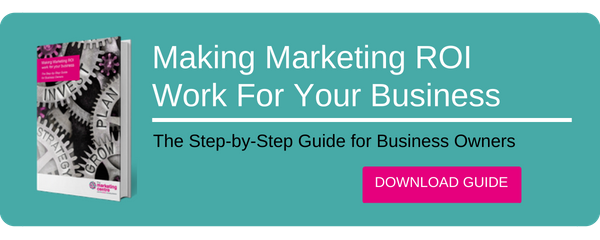Why should you measure brand awareness?
Many businesses treat brand awareness as something intangible. They know it’s important to be a recognised name, trusted by customers and respected by competitors, but establishing just how trusted and respected they are remains a mystery.
Digital marketing specialists don’t always help. They see success on their own terms rather than on those of the business as a whole. If they’ve made a video and it’s had a million views and a dozen influencers have talked about it on LinkedIn, they’re happy. But you’re not just making content for the sake of putting it out there. It’s there to do some good for your business: to make a demonstrable impact on the bottom line.
Brand awareness sits at the top of the sales funnel and if the set-up is correct, the more that goes in, the more that comes out in terms of new business. What’s more, establishing a strong brand presence will, over the long-term, lower your cost of acquisition for new customers and improve the performance of your lead generation activities that sit further down the sales funnel.
All of this goes to say that building awareness of your brand should be a major business objective. And as a major business objective, it needs the right measurements. You need to know if you’re getting the all-important Return On Marketing Investment, or if you’re just chasing vanity metrics that make you king of the social media molehill. And to do that, you need to know and quantify what you’re trying to achieve.
How to measure brand awareness
Measuring brand awareness is a three step process:
- Know the metrics you need to measure
- Understand how you’re going to measure those metrics, and
-
Have the right tools to measure accurately on an ongoing basis
In this article, we’ll take you through each of those and explain what you should do with that information and the results.
What are brand awareness metrics?
Ways to measure brand awareness fall into three major categories; each corresponding to a specific area in which you might be trying to achieve growth. Those categories are reach, engagement, and audience size, and each is best measured by a specific set of metrics. By tracking the right figures you’ll know how each marketing or brand awareness campaign, each asset you’ve created, is helping to achieve the business goal it was designed to meet.
1. Marketing reach
Reach refers to the number of people who’ve come across a particular asset. Reach has different metrics depending on the type of marketing content asset you’re talking about.
How to measure marketing reach
-
Website sessions - a user session is one set of clicks and reads on the site; the number of user sessions per day indicates how much website traffic your web page is bringing in.
-
Social media impressions - the number of times a post from your Facebook, Twitter, LinkedIn etc. page is displayed to users.
-
Email opens - if people are opening your emails, they have the chance to make an impact.
-
Video views - the number of times your video has been played for more than a few seconds.
-
Podcast listeners - as above, for audio-only content.
-
Magazine circulation - the number of copies of a magazine usually distributed for each issue, including free copies.
You’ll notice that all these metrics only measure whether your content has been seen and heard - not whether it’s been read, listened to, understood, acted upon, and converted into a meaningful perception of your brand. That’s where the next category comes in.
Tools for measuring marketing reach
There are a variety of tools available for measuring marketing reach, many of which are free or low-cost.
-
Tracking impressions. Tracking impressions helps you understand how many times people are shown your content. By referencing this data against website traffic, advertising campaigns or social media engagement you’ll get a broader view of your marketing reach. You can measure impressions using baked-in tools on social media platforms, through Google Adwords or non-native advertising platforms.
-
Google Analytics. Google Analytics is a popular free tool offering a variety of website metrics for measuring reach including traffic, referral sources (such as social media channels), and much more. You can also get valuable insights into demographics and audience behaviours and a range of useful reports.
-
Social listening tools. Use these tools to monitor engagement on your social media channels such as shares, follows, comments, hashtag uses etc. Hootsuite is a popular choice and has a free plan for limited use.
-
Search data. Monitoring search data can provide valuable insights into the levels of interest around your products or services, your brand and your competitors. It is also a great way of improving your keyword targeting. Google Trends and SEMrush are excellent places to start.
-
Talk to your customers and prospects. Surveys, focus groups and 1-1 interviews are all effective methods for gauging brand awareness and getting feedback on your products and services. Tools such as Survey Monkey are easy to use, secure and provide summarised results. A freemium plan is available.
2. Brand engagement
Engagement metrics measure the effectiveness of your marketing in building brand perception. They track specific responses people have had to your marketing assets. The difference between reach and engagement is the difference between hearing a bird sing and saying “hey, listen to that”.
How to measure brand engagement
-
Pages per session - by digging a little deeper into the website sessions metric and counting how many pages people view during their time on your site, you can see how engaged they are - the more they’re looking at your site, the more they care about what you’re offering.
-
Mentions - every time someone mentions your brand or your target keywords, you should know about it. A social listening tool like Awario, Brandwatch, or the helpfully-named Mention will be useful here.
-
Shares - if people think your message is worth hearing, they’ll pass it on.
-
Comments - both on the content itself and on social media posts and shares.
-
Reviews of the content or the offering it’s about.
-
Survey completions / feedback - Often, you’ll make a specific call to action: “tell us what you think” or “suggest a topic for an article.” If that’s answered, you know people were paying attention.
Engagement metrics can be a double-edged sword. High pages/session counts can suggest people are really into your site, or that your site is badly designed and they have to go through three pages to reach what they want. Shares aren’t always positive - sometimes people will share your content to provide context for a critical takedown. You only need to spend five minutes scrolling down the comments on any YouTube video to see that not all engagement is helpful.
Tools for measuring brand engagement
As with gauging brand awareness there are a number of tools available for measuring brand engagement; often with free or low-cost versions available.
-
Google Analytics. Google Analytics offers a raft of metrics for measuring brand engagement such as time spent on page, pages per visit, average session duration and bounce rate.
-
Social listening tools. Measuring likes and shares gives you a good idea of how people are engaging with your brand, particularly when you track these metrics over time. It’s also a good idea to monitor sentiment in the comments for anecdotal feedback.
-
Customer review platforms. Checking review sites such as TrustPilot and Feefo offers valuable insights into how your brand is perceived and helps inform your wider sales and marketing strategy.
3. Audience size
Audience size is a bit of a vanity metric but it gives context to your metrics by showing how many people you can expect to reach or engage. You can monitor your audience size in the following ways:
- Number of social media followers
- Social media reach
- Share of voice
- Newsletter sign-ups
- Subscribers to your blog posts
You can use this data to work out the percentage of your audience who actually engage with your marketing, setting benchmarks and targets for improvement. Subscriptions, sign-ups and follows also indicate brand loyalty - these people are sufficiently invested in you that they want to be kept up to date, so keep them up to date!
Benchmarking your brand awareness metrics
As with all aspects of your marketing, it is important to benchmark your brand awareness metrics. Most of the tools we have mentioned in this article allow you to view and compare historical data so you can monitor your brand engagement and awareness over time and note any trends and anomalies. Providing your peers share their information, Google Analytics offers benchmarking data against your competitors to help inform your KPIs and keep an eye on how you’re performing.
When it comes to your social media you can choose from benchmarking against your own performance, your direct competitors, or brands you aspire to be like. Twitter and Facebook both offer useful data for benchmarking your own performance. For your competitors or aspirational brands try the BuzzSumo Influencer Search or compare Twitter accounts on Followerwonk.
Brand awareness goals and KPIs
Once you know what metrics you’re measuring and why, the actual measuring becomes straightforward.
First, get the foundations right. Set a business goal for each element of your marketing mix and a key performance indicator based on what you want the customer to do when they’ve seen each asset. For example, you want this many email opens, leading to that many pages per session, and the other amount of survey completions.
Remember to keep an eye on the key ROMI metrics - cost per acquisition, customer lifetime value, and marketing as a percentage of sales. These metrics will tell you if you’re spending enough or too much to secure actual customers from all this brand building.
Interpreting your results and adapting your strategy
Finally, it is important to remember to do something meaningful with all this data! The point of tracking brand awareness metrics is to make improvements, tweaks and adjustments to your marketing strategy. If a particular article is popular, try and spin off a series, or at least a “six months later” reflection. If a video does well, look at making more like it, and appropriate content to embed them in.
Brand awareness isn’t as nebulous as it sounds, as long as you’re clear about what you’re trying to do with it. Knowing what you want to achieve will determine your most crucial metrics, and the strategies and tactics you’ll need to achieve them. You can then revisit your goals and strategies on a regular basis to adapt and enhance them as your business and market evolve. You should not only be consistently measuring your performance, but what scores you’re keeping as well. This approach will help to ensure that your brand building is in sync with your overall business objectives, that you are focused on what your customers need - and that you capitalise on every opportunity to build brand awareness.





